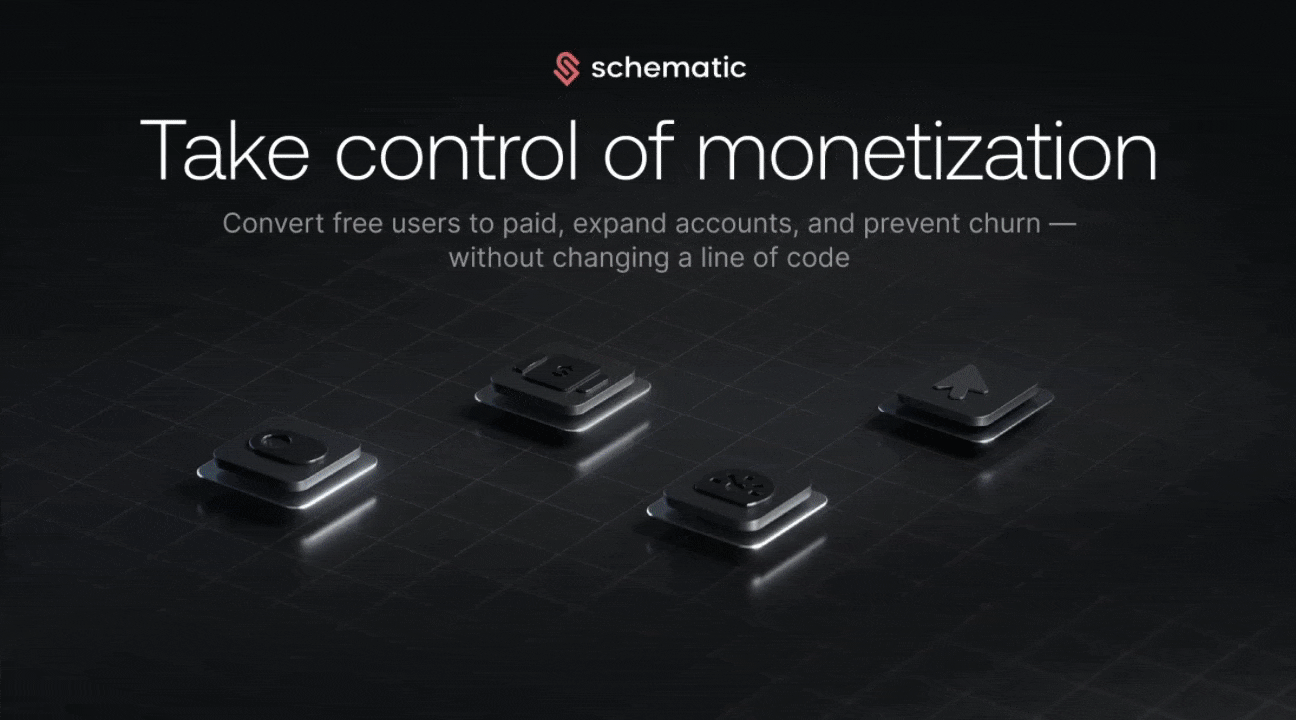3 Questions to Design a Winning Credit Model
Plus: Updates from Loom and Prezi.
Welcome back to Good Better Best!
This week we released the latest PricingSaaS Report, breaking down Credit Models in AI Pricing (get it here).
Credit models are emerging as a popular way to price AI products, but few SaaS operators have experience actually implementing a credit model.
In the report, we went deep on the foundational questions to ask before launching, then pulled examples from the PricingSaaS database to show how top AI companies are making it happen.
In today’s post, we’ll highlight those 3 key questions. For a deeper dive, download the full report and join us next week for a webinar with Ulrik Lehrskov-Schmidt where he’ll go deep on:
How credit systems work
How to sell and communicate credit systems
Terms, Conditions and revenue recognition of credits
Cases and Q&A
📰 Pricing News & Updates
Today’s Post is brought to you by Schematic — The monetization platform built for product & revenue teams.
Schematic gives product, growth, and sales teams the ability to:
Convert free trialers to paid accounts
Drive expansion with triggered paywalls and alerts
Launch & support any pricing model, from seats to credits
Support custom configuration for enterprise deals
Prevent churn with loyalty credits and discounts
All without pulling in engineering.
The Credit Model: A Powerful Approach to AI Monetization
AI monetization is wide open, and companies are exploring diverse strategies to commercialize AI-first products. Among the options, the credit model has emerged as one of the most intriguing and effective approaches to monetizing AI solutions.
Despite growing interest, our research revealed that only about 2% of companies in the PricingSaaS 500 Index actually use a credit model. This contrast between interest and implementation highlights an experience gap among SaaS operators.
Many SaaS builders want to implement credit models but lack the necessary knowledge or experience. This creates an opportunity for those who can successfully navigate the complexities of credit-based pricing.
In this post, we’ll break down why credit models are getting more popular, and the 3 fundamental questions to ask yourself to steer implementation.
Why Credit Models work for AI Solutions
The easiest way to think about credit models is a hybrid between traditional license and usage-based models.
A license model allows a customer to pay upfront for the right to consume a product. This is ideal for customers that want predictability.
A usage model allows customers to use a product, then pay later for that consumption. This is ideal for customers that want flexibility.
A credit model offers the best of both worlds — customers purchase credits upfront, giving them the right to consume services later, and usage is estimated and paid for in advance. This combines the predictability of license models with the flexibility of usage models.
This blend has been particularly useful for AI solutions — it allows the solution provider to manage margins, and gives the customer some predictability with products that would otherwise have variable usage.
Three Fundamental Questions for Credit Model Implementation
We partnered with Ulrik Lehrskov-Schmidt and the team at Willingness To Pay to identify the most important considerations when implementing a credit model. Ulrik boiled it down to three foundational questions:
1. How Much Is a Credit Worth?
The first challenge is establishing your credit's value and its relationship to the dollar. Consider:
The initial value of each credit
Volume-based discount structures
How credit value scales with increased purchases
Pricing strategies for usage beyond credits included in your plan
2. What Can a Credit Buy?
Consider whether your model will feature single mapping or multi-mapping:
Single Mapping: One credit purchases one specific unit of value (like Audible's one-credit-per-audiobook model)
Multi-Mapping: Credits can purchase multiple units of value
Multi-mapping is more relevant for B2B SaaS, but adds complexity as different units of value should cost different amounts of credits.
3. Where Does Credit Value Fall on the Value Chain?
The value chain spans from inputs (like seats) to outcomes (like booked meetings or revenue). Shoutout to Christopher Truce from Willingness To Pay for the visual below:
Tying this back to credits:
Input-focused credits might cover access or usage rights
Outcome-focused credits might purchase results or achievements
Credits for midpoint values like processing units or API calls
Many B2B SaaS companies offer multiple units of value at different points along the value chain, with varying values.
Importantly, these three questions don't operate in isolation—they're highly interrelated:
A credit's value depends on where associated units fall on the value chain
What a credit can buy depends on your single vs. multi-mapping approach and value chain position
By exploring each question, you’ll pressure-test your approach to credits and ensure you aren’t leaving money on the table.
Looking Ahead
As AI continues to transform the SaaS landscape, effective monetization strategies become increasingly critical. The credit model offers a compelling approach that balances predictability with consumption-based flexibility.
By carefully considering credit value, purchasing options, and value chain positioning, companies can create credit models that satisfy customer needs while delivering sustainable revenue growth.
To dive deeper into credit models, download our full AI Credit Model Report, and join us next Thursday for a webinar with Ulrik where we’ll be going deeper and answering live questions.
How we can help when you’re ready
Got questions? Join the free PricingSaaS Community to get fast answers from pricing leaders.
Leveling up? Check out our Resource Center for links to pricing and packaging research, webinars, and our free online course.
Need help? Our SaaS Pricing Assessment delivers a clear roadmap to smarter pricing and packaging in 30 days.




